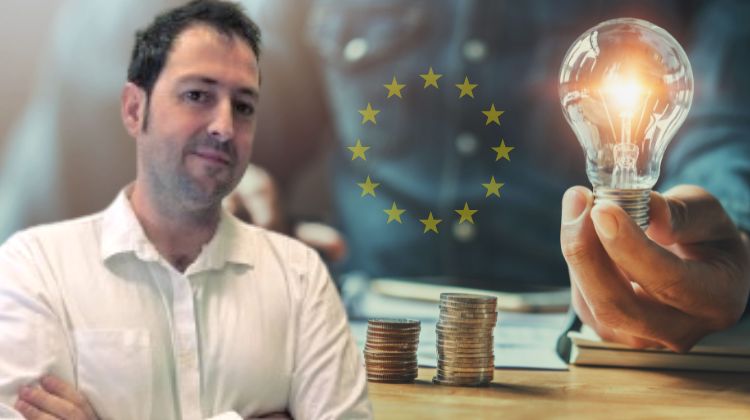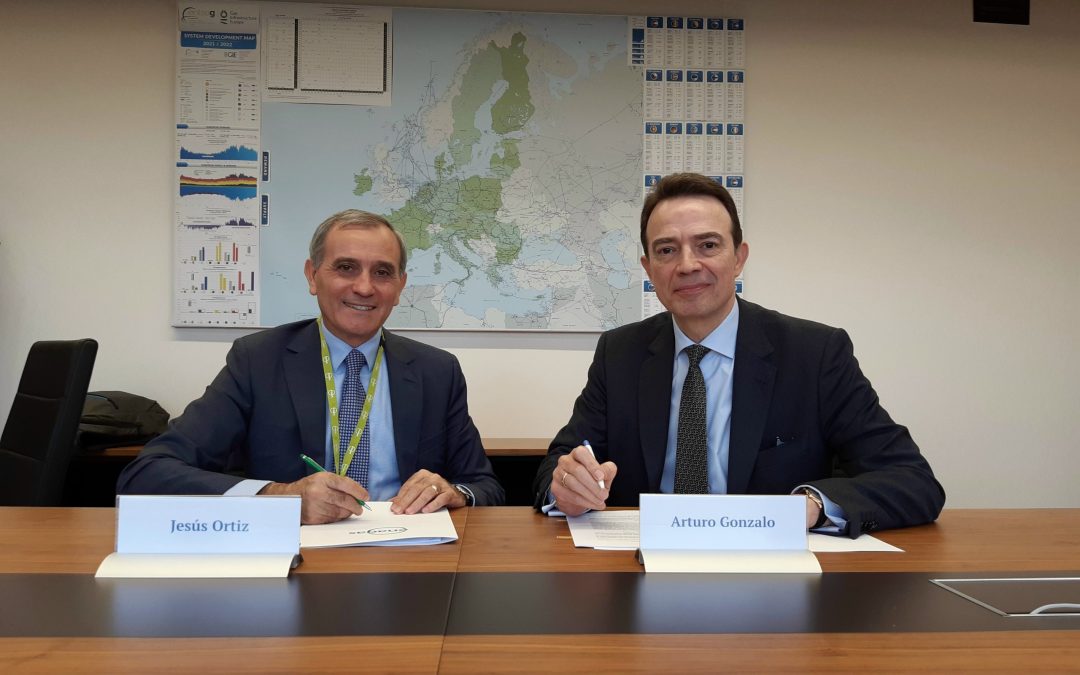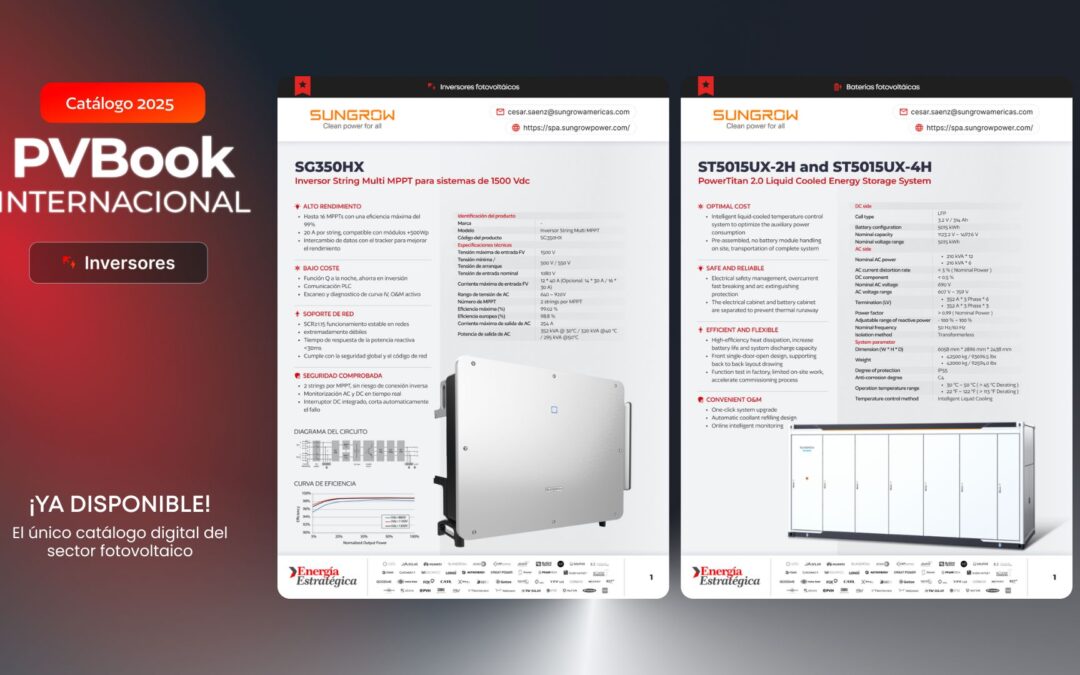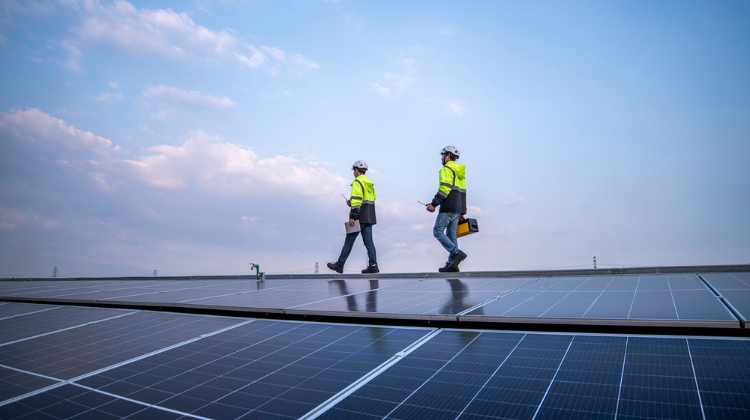Spain designs a tax on energy companies but with incentives for decarbonization: reactions and political stances.


Spain designs a tax on energy companies but with incentives for decarbonization: reactions and political stances.

Currently, there are 17 GW of batteries requested in Spain, of which only 1 GW is hybridized with renewables. Antonio Delgado Rigal, CEO of AleaSoft, highlights the potential of hybridization to improve the profitability and stability of clean energies.

With a strong interest in participating in upcoming auctions in Iberia, Saitec Offshore Technologies is driving floating offshore wind in the region through key projects such as DemoSATH, GEROA, and Medfloat. The company highlights the value of these initiatives in reducing costs and promoting the energy transition offshore.

Driven by the Spanish multinational Celsa and IREC, along with a dozen companies and technology centers, the project has explored the applications of SOEC technology for the sector. This electrolyzer operates at high temperatures, utilizing residual heat and excess steam generated in industrial facilities to produce renewable hydrogen.

One by one, the changes introduced by the Final Resolution of this first call for innovative energy storage projects after the appeals, along with the ranking of companies that received the largest allocations.

The decline in PPA prices in Spain and market volatility are leading Alter5 to strengthen its financing proposals in the merchant model. Salvador Carrillo, co-founder of Alter5, explains the leveraging opportunities that allow developers to tackle this uncertain environment with a flexible and digitized debt structure.

“Her negotiating ability will be tested,” says Carlos Martín Graña, who points out flaws in her support for sectors outside the renewable energy field and the industry.

Both executives will drive the company’s growth strategy in renewable energy and its commitment to decarbonization.

The two companies have signed a collaboration agreement to promote carbon footprint reduction projects, focusing on the development of a logistics chain for the capture, transport, and storage of CO2.

In the first 12 days of the month, the government approved photovoltaic projects led by Iberdrola, Acciona, and Iron Power, as well as a storage project by Roldwin. However, it rejected wind initiatives proposed by Forestalia.

With more than 560 companies in the market—a 40% increase compared to four years ago—differentiation and retention have become challenging. According to industry insiders, price remains the main factor influencing customer choices. In this context, the growing share of renewables in the energy mix and greater awareness of various contracting options are seen as positive signals.

This project includes the supply of over 3,900 trackers, strategically distributed across multiple layouts, which will enable flexible operation and optimization of the project’s lifespan, as well as an improvement in the LCOE for the client.

In an exclusive interview, Daniel Martínez Ezquerra, General Director of Risen Energy EU, states: “Madrid was chosen for its centrality and excellent connectivity, making it a strategic point for both Risen’s national and international operations.”

The Law 2/2024 in Galicia imposes a fee on wind energy infrastructure and allows for the installation of wind farms outside the designated areas, provided they meet specific conditions. However, the wind energy sector questions certain restrictions imposed by the Xunta.

Ahead of COP29 in Baku, Javier Fernández-Font, General Director of Alusin Solar and Vice President of UNEF, emphasizes the urgency of establishing incentives and financial support for the development of photovoltaic solar energy at the European level and in Latin America, where institutional support is key to boosting this sector in still lagging regions.

The FER X Decree, currently under discussion, aims to accelerate Italy’s energy transition toward decarbonization by 2030, promoting financial incentives and administrative simplification in the renewable sector. Francesco Passafiume, Product Manager of PowerSolutions EMEA, points out that the regulation will reduce project processing times, but he warns that the success of the decree depends on its effective implementation and alignment with other regulatory frameworks, such as the Decree on Suitable Areas and the Environmental Law Decree.

With 25 GW of storage solutions applying for grid connection, Spain faces the challenge of accelerating access permits for batteries. The sector is calling for, among other things, progress in capacity auctions, and regional governments are meeting to unify evaluation criteria.

The milestone marks a significant advancement for the country’s energy transition and positions Rolwind as a leader in innovation and sustainability within the energy sector.

The power purchase agreement involves the supply of 230 GWh of photovoltaic energy over the contract period, which will reduce emissions by 6,960 tonnes of CO₂ annually.

Italy is on track to break its record, reaching 7 GW of new renewable energy installations in 2024 despite the uncertainty generated by the government’s support scheme, according to Francesco Marghella, an energy systems specialist. Additionally, he notes that the MACSE will play a crucial role in the market but expresses concerns over the competitiveness of the initial auction.

The incorporation of tools such as social due diligence and judicial mediation is transforming the approach to conflicts in energy storage projects. Experts emphasize the need for preventive actions and mediation strategies to reduce social opposition and improve relationships with local communities.

Spain designs a tax on energy companies but with incentives for decarbonization: reactions and political stances.

Currently, there are 17 GW of batteries requested in Spain, of which only 1 GW is hybridized with renewables. Antonio Delgado Rigal, CEO of AleaSoft, highlights the potential of hybridization to improve the profitability and stability of clean energies.

With a strong interest in participating in upcoming auctions in Iberia, Saitec Offshore Technologies is driving floating offshore wind in the region through key projects such as DemoSATH, GEROA, and Medfloat. The company highlights the value of these initiatives in reducing costs and promoting the energy transition offshore.

Driven by the Spanish multinational Celsa and IREC, along with a dozen companies and technology centers, the project has explored the applications of SOEC technology for the sector. This electrolyzer operates at high temperatures, utilizing residual heat and excess steam generated in industrial facilities to produce renewable hydrogen.

One by one, the changes introduced by the Final Resolution of this first call for innovative energy storage projects after the appeals, along with the ranking of companies that received the largest allocations.

The decline in PPA prices in Spain and market volatility are leading Alter5 to strengthen its financing proposals in the merchant model. Salvador Carrillo, co-founder of Alter5, explains the leveraging opportunities that allow developers to tackle this uncertain environment with a flexible and digitized debt structure.

“Her negotiating ability will be tested,” says Carlos Martín Graña, who points out flaws in her support for sectors outside the renewable energy field and the industry.

Both executives will drive the company’s growth strategy in renewable energy and its commitment to decarbonization.

The two companies have signed a collaboration agreement to promote carbon footprint reduction projects, focusing on the development of a logistics chain for the capture, transport, and storage of CO2.

In the first 12 days of the month, the government approved photovoltaic projects led by Iberdrola, Acciona, and Iron Power, as well as a storage project by Roldwin. However, it rejected wind initiatives proposed by Forestalia.

With more than 560 companies in the market—a 40% increase compared to four years ago—differentiation and retention have become challenging. According to industry insiders, price remains the main factor influencing customer choices. In this context, the growing share of renewables in the energy mix and greater awareness of various contracting options are seen as positive signals.

This project includes the supply of over 3,900 trackers, strategically distributed across multiple layouts, which will enable flexible operation and optimization of the project’s lifespan, as well as an improvement in the LCOE for the client.

In an exclusive interview, Daniel Martínez Ezquerra, General Director of Risen Energy EU, states: “Madrid was chosen for its centrality and excellent connectivity, making it a strategic point for both Risen’s national and international operations.”

The Law 2/2024 in Galicia imposes a fee on wind energy infrastructure and allows for the installation of wind farms outside the designated areas, provided they meet specific conditions. However, the wind energy sector questions certain restrictions imposed by the Xunta.

Ahead of COP29 in Baku, Javier Fernández-Font, General Director of Alusin Solar and Vice President of UNEF, emphasizes the urgency of establishing incentives and financial support for the development of photovoltaic solar energy at the European level and in Latin America, where institutional support is key to boosting this sector in still lagging regions.

The FER X Decree, currently under discussion, aims to accelerate Italy’s energy transition toward decarbonization by 2030, promoting financial incentives and administrative simplification in the renewable sector. Francesco Passafiume, Product Manager of PowerSolutions EMEA, points out that the regulation will reduce project processing times, but he warns that the success of the decree depends on its effective implementation and alignment with other regulatory frameworks, such as the Decree on Suitable Areas and the Environmental Law Decree.

With 25 GW of storage solutions applying for grid connection, Spain faces the challenge of accelerating access permits for batteries. The sector is calling for, among other things, progress in capacity auctions, and regional governments are meeting to unify evaluation criteria.

The milestone marks a significant advancement for the country’s energy transition and positions Rolwind as a leader in innovation and sustainability within the energy sector.

The power purchase agreement involves the supply of 230 GWh of photovoltaic energy over the contract period, which will reduce emissions by 6,960 tonnes of CO₂ annually.

Italy is on track to break its record, reaching 7 GW of new renewable energy installations in 2024 despite the uncertainty generated by the government’s support scheme, according to Francesco Marghella, an energy systems specialist. Additionally, he notes that the MACSE will play a crucial role in the market but expresses concerns over the competitiveness of the initial auction.

The incorporation of tools such as social due diligence and judicial mediation is transforming the approach to conflicts in energy storage projects. Experts emphasize the need for preventive actions and mediation strategies to reduce social opposition and improve relationships with local communities.

La compañía destaca tres de sus productos estrella en PVBook, el catálogo estratégico internacional: el inversor SG350HX y los sistemas de almacenamiento ST5015UX-2H y ST5015UX-4H, diseñados para maximizar la eficiencia.

The new Royal Decree will remain open for public consultation until 24 October, although the sector does not foresee significant changes being demanded. Which areas hold the greatest potential under the new provisions?

El nuevo Real Decreto estará en consulta pública hasta el 24 de octubre, aunque desde el sector no demandarán cambios significativos. ¿Cuáles son las zonas de mayor potencial con las novedades?






